Saptarshi Das
PAMMELA: Policy Administration Methodology using Machine Learning
Nov 13, 2021



Abstract:In recent years, Attribute-Based Access Control (ABAC) has become quite popular and effective for enforcing access control in dynamic and collaborative environments. Implementation of ABAC requires the creation of a set of attribute-based rules which cumulatively form a policy. Designing an ABAC policy ab initio demands a substantial amount of effort from the system administrator. Moreover, organizational changes may necessitate the inclusion of new rules in an already deployed policy. In such a case, re-mining the entire ABAC policy will require a considerable amount of time and administrative effort. Instead, it is better to incrementally augment the policy. Keeping these aspects of reducing administrative overhead in mind, in this paper, we propose PAMMELA, a Policy Administration Methodology using Machine Learning to help system administrators in creating new ABAC policies as well as augmenting existing ones. PAMMELA can generate a new policy for an organization by learning the rules of a policy currently enforced in a similar organization. For policy augmentation, PAMMELA can infer new rules based on the knowledge gathered from the existing rules. Experimental results show that our proposed approach provides a reasonably good performance in terms of the various machine learning evaluation metrics as well as execution time.
Artificial neural network based modelling approach for municipal solid waste gasification in a fluidized bed reactor
Feb 05, 2018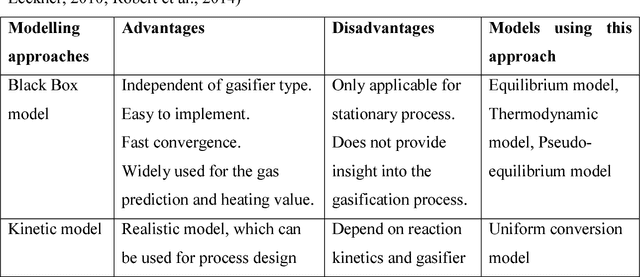
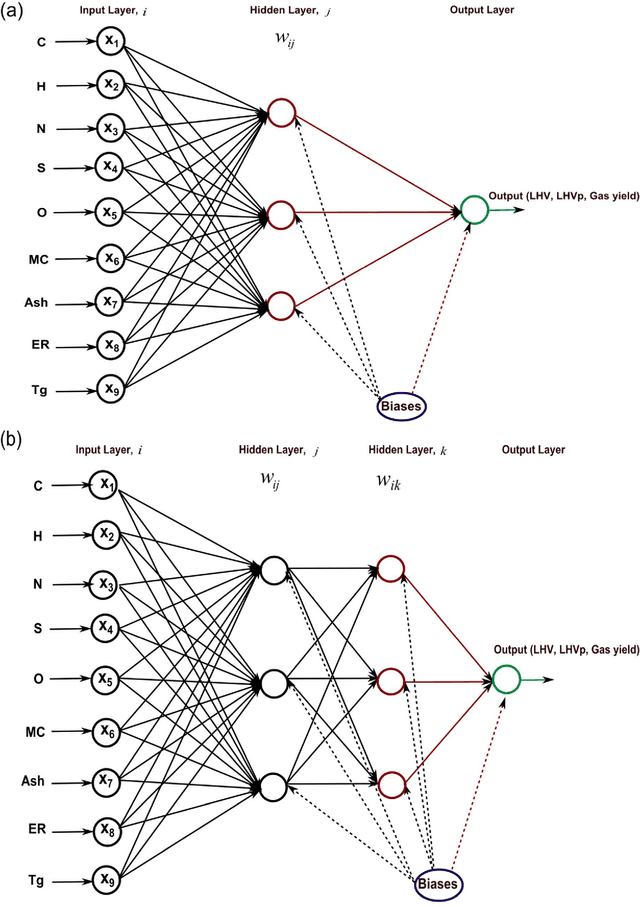
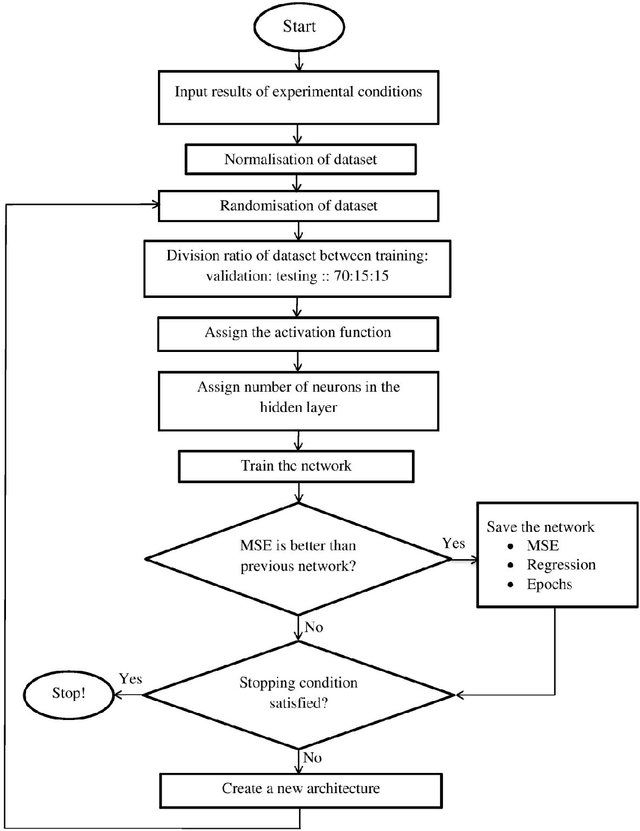
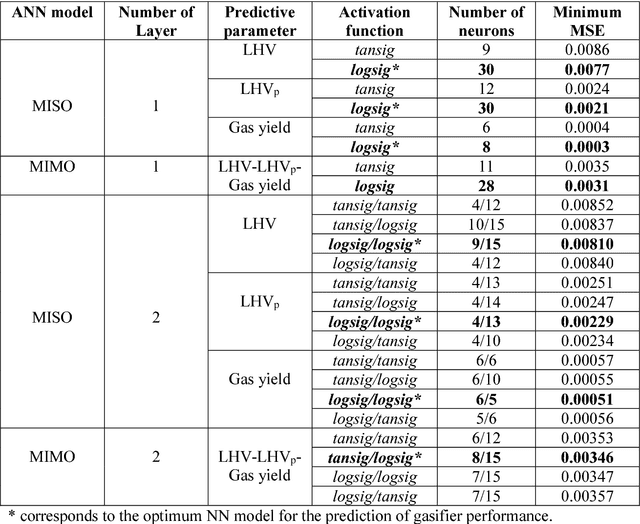
Abstract:In this paper, multi-layer feed forward neural networks are used to predict the lower heating value of gas (LHV), lower heating value of gasification products including tars and entrained char (LHVp) and syngas yield during gasification of municipal solid waste (MSW) during gasification in a fluidized bed reactor. These artificial neural networks (ANNs) with different architectures are trained using the Levenberg-Marquardt (LM) back-propagation algorithm and a cross validation is also performed to ensure that the results generalise to other unseen datasets. A rigorous study is carried out on optimally choosing the number of hidden layers, number of neurons in the hidden layer and activation function in a network using multiple Monte Carlo runs. Nine input and three output parameters are used to train and test various neural network architectures in both multiple output and single output prediction paradigms using the available experimental datasets. The model selection procedure is carried out to ascertain the best network architecture in terms of predictive accuracy. The simulation results show that the ANN based methodology is a viable alternative which can be used to predict the performance of a fluidized bed gasifier.
* 34 pages, 11 figures
Performance Analysis of Robust Stable PID Controllers Using Dominant Pole Placement for SOPTD Process Models
Jan 28, 2018
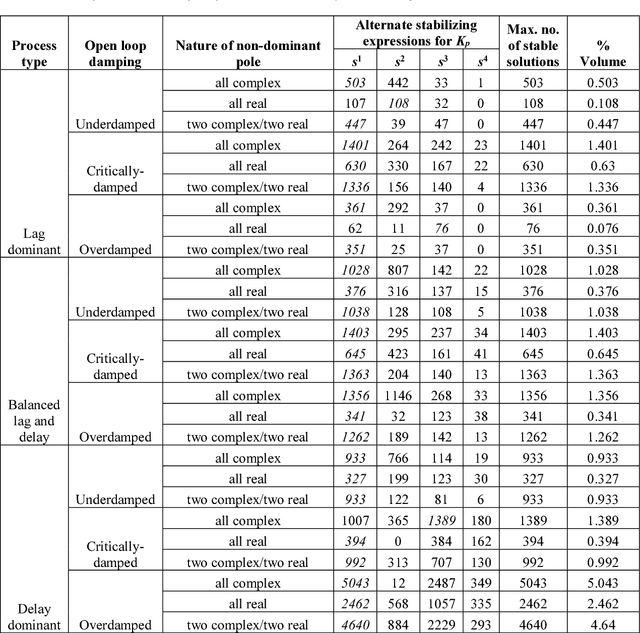
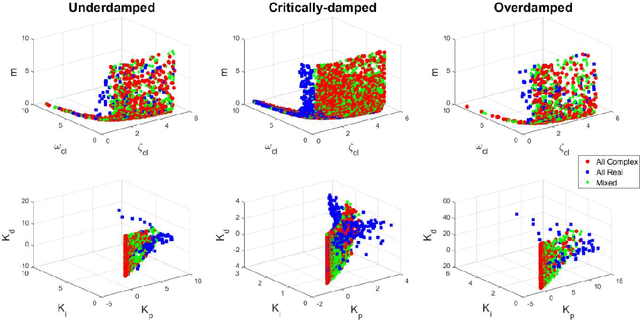
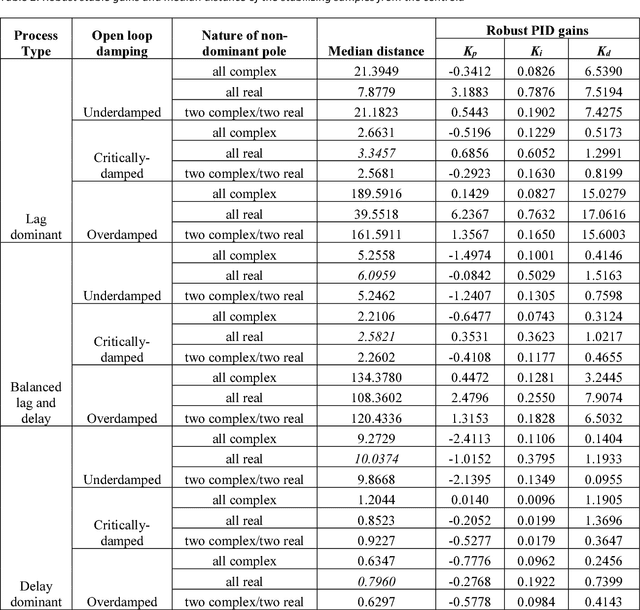
Abstract:This paper derives new formulations for designing dominant pole placement based proportional-integral-derivative (PID) controllers to handle second order processes with time delays (SOPTD). Previously, similar attempts have been made for pole placement in delay-free systems. The presence of the time delay term manifests itself as a higher order system with variable number of interlaced poles and zeros upon Pade approximation, which makes it difficult to achieve precise pole placement control. We here report the analytical expressions to constrain the closed loop dominant and non-dominant poles at the desired locations in the complex s-plane, using a third order Pade approximation for the delay term. However, invariance of the closed loop performance with different time delay approximation has also been verified using increasing order of Pade, representing a closed to reality higher order delay dynamics. The choice of the nature of non-dominant poles e.g. all being complex, real or a combination of them modifies the characteristic equation and influences the achievable stability regions. The effect of different types of non-dominant poles and the corresponding stability regions are obtained for nine test-bench processes indicating different levels of open-loop damping and lag to delay ratio. Next, we investigate which expression yields a wider stability region in the design parameter space by using Monte Carlo simulations while uniformly sampling a chosen design parameter space. Various time and frequency domain control performance parameters are investigated next, as well as their deviations with uncertain process parameters, using thousands of Monte Carlo simulations, around the robust stable solution for each of the nine test-bench processes.
Evolving Chaos: Identifying New Attractors of the Generalised Lorenz Family
Jan 28, 2018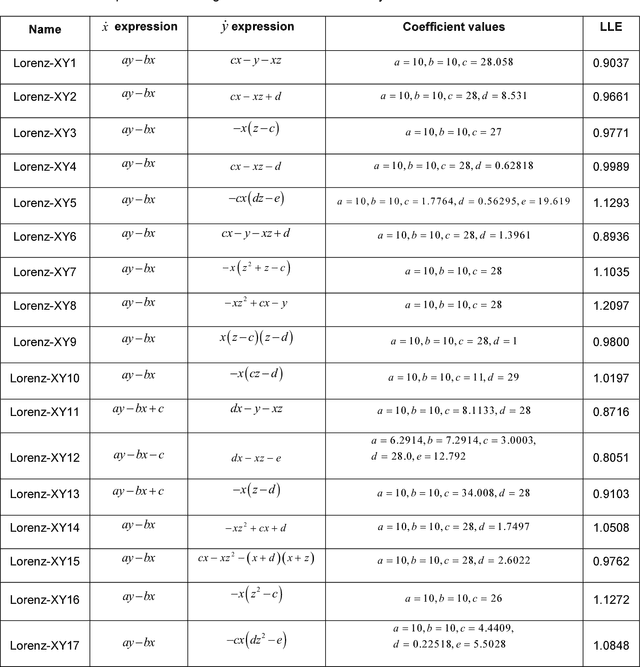
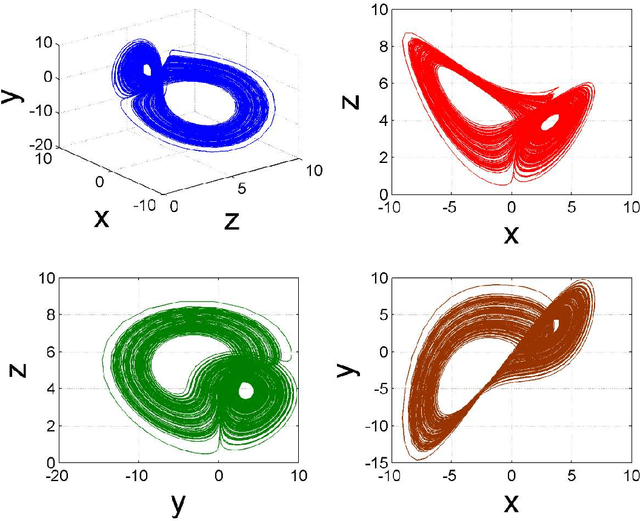
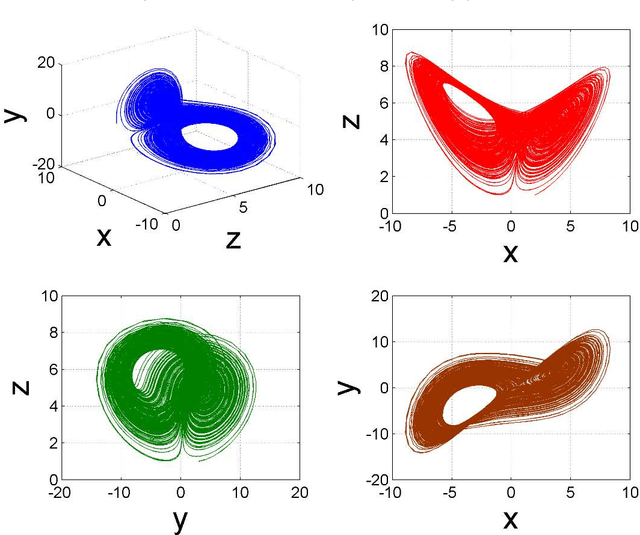

Abstract:In a recent paper, we presented an intelligent evolutionary search technique through genetic programming (GP) for finding new analytical expressions of nonlinear dynamical systems, similar to the classical Lorenz attractor's which also exhibit chaotic behaviour in the phase space. In this paper, we extend our previous finding to explore yet another gallery of new chaotic attractors which are derived from the original Lorenz system of equations. Compared to the previous exploration with sinusoidal type transcendental nonlinearity, here we focus on only cross-product and higher-power type nonlinearities in the three state equations. We here report over 150 different structures of chaotic attractors along with their one set of parameter values, phase space dynamics and the Largest Lyapunov Exponents (LLE). The expressions of these new Lorenz-like nonlinear dynamical systems have been automatically evolved through multi-gene genetic programming (MGGP). In the past two decades, there have been many claims of designing new chaotic attractors as an incremental extension of the Lorenz family. We provide here a large family of chaotic systems whose structure closely resemble the original Lorenz system but with drastically different phase space dynamics. This advances the state of the art knowledge of discovering new chaotic systems which can find application in many real-world problems. This work may also find its archival value in future in the domain of new chaotic system discovery.
Comparison of Decision Tree Based Classification Strategies to Detect External Chemical Stimuli from Raw and Filtered Plant Electrical Response
May 13, 2017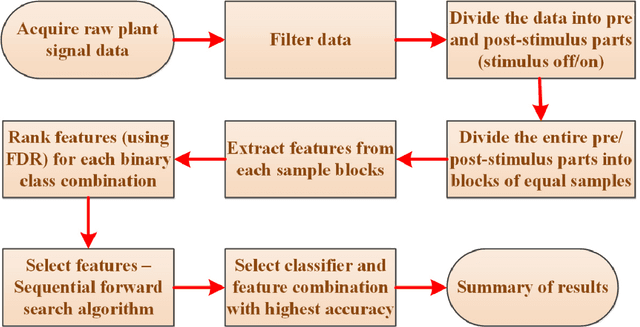
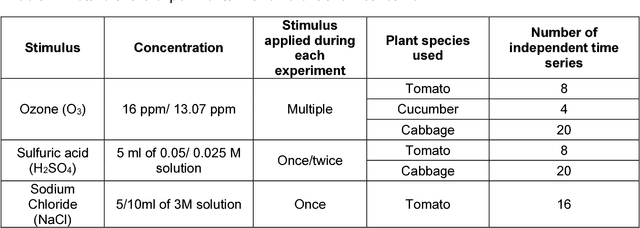
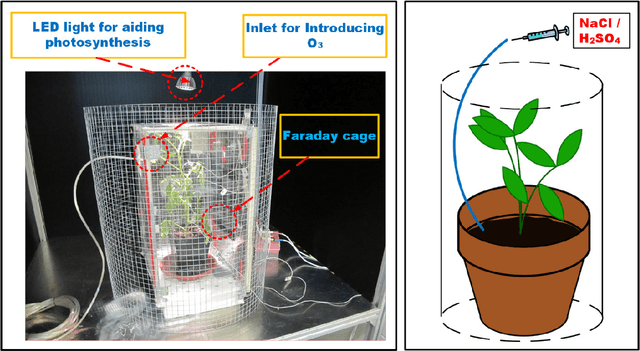

Abstract:Plants monitor their surrounding environment and control their physiological functions by producing an electrical response. We recorded electrical signals from different plants by exposing them to Sodium Chloride (NaCl), Ozone (O3) and Sulfuric Acid (H2SO4) under laboratory conditions. After applying pre-processing techniques such as filtering and drift removal, we extracted few statistical features from the acquired plant electrical signals. Using these features, combined with different classification algorithms, we used a decision tree based multi-class classification strategy to identify the three different external chemical stimuli. We here present our exploration to obtain the optimum set of ranked feature and classifier combination that can separate a particular chemical stimulus from the incoming stream of plant electrical signals. The paper also reports an exhaustive comparison of similar feature based classification using the filtered and the raw plant signals, containing the high frequency stochastic part and also the low frequency trends present in it, as two different cases for feature extraction. The work, presented in this paper opens up new possibilities for using plant electrical signals to monitor and detect other environmental stimuli apart from NaCl, O3 and H2SO4 in future.
Multi-objective Active Control Policy Design for Commensurate and Incommensurate Fractional Order Chaotic Financial Systems
Nov 29, 2016

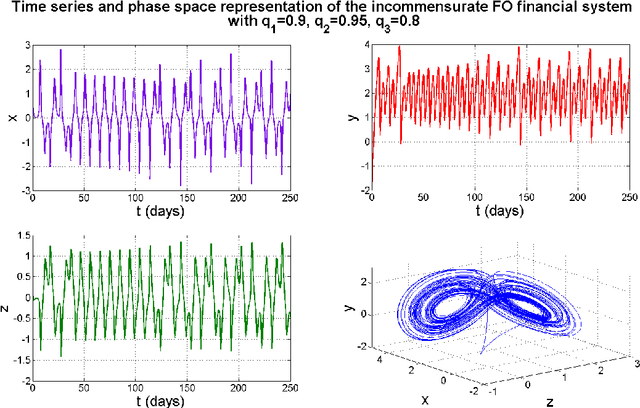

Abstract:In this paper, an active control policy design for a fractional order (FO) financial system is attempted, considering multiple conflicting objectives. An active control template as a nonlinear state feedback mechanism is developed and the controller gains are chosen within a multi-objective optimization (MOO) framework to satisfy the conditions of asymptotic stability, derived analytically. The MOO gives a set of solutions on the Pareto optimal front for the multiple conflicting objectives that are considered. It is shown that there is a trade-off between the multiple design objectives and a better performance in one objective can only be obtained at the cost of performance deterioration in the other objectives. The multi-objective controller design has been compared using three different MOO techniques viz. Non Dominated Sorting Genetic Algorithm-II (NSGA-II), epsilon variable Multi-Objective Genetic Algorithm (ev-MOGA), and Multi Objective Evolutionary Algorithm with Decomposition (MOEA/D). The robustness of the same control policy designed with the nominal system settings have been investigated also for gradual decrease in the commensurate and incommensurate fractional orders of the financial system.
* 26 pages, 8 figures, 2 tables
Exploring Strategies for Classification of External Stimuli Using Statistical Features of the Plant Electrical Response
Nov 29, 2016
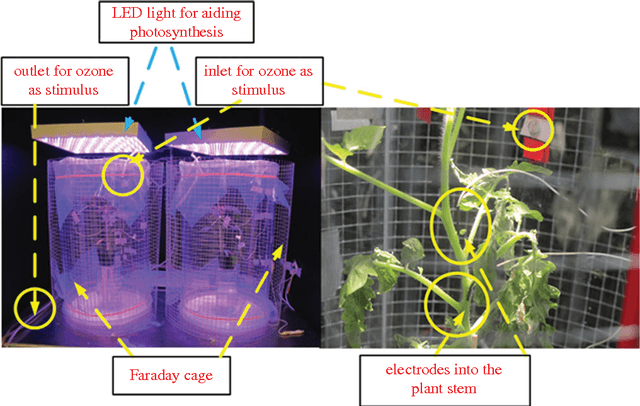
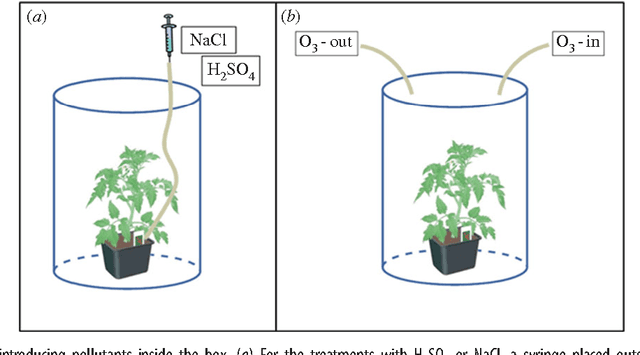
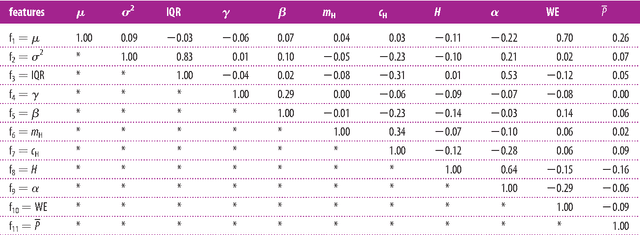
Abstract:Plants sense their environment by producing electrical signals which in essence represent changes in underlying physiological processes. These electrical signals, when monitored, show both stochastic and deterministic dynamics. In this paper, we compute 11 statistical features from the raw non-stationary plant electrical signal time series to classify the stimulus applied (causing the electrical signal). By using different discriminant analysis based classification techniques, we successfully establish that there is enough information in the raw electrical signal to classify the stimuli. In the process, we also propose two standard features which consistently give good classification results for three types of stimuli - Sodium Chloride (NaCl), Sulphuric Acid (H2SO4) and Ozone (O3). This may facilitate reduction in the complexity involved in computing all the features for online classification of similar external stimuli in future.
* 22 pages, 7 figures, 9 tables
Fractional Order Fuzzy Control of Hybrid Power System with Renewable Generation Using Chaotic PSO
Nov 29, 2016



Abstract:This paper investigates the operation of a hybrid power system through a novel fuzzy control scheme. The hybrid power system employs various autonomous generation systems like wind turbine, solar photovoltaic, diesel engine, fuel-cell, aqua electrolyzer etc. Other energy storage devices like the battery, flywheel and ultra-capacitor are also present in the network. A novel fractional order (FO) fuzzy control scheme is employed and its parameters are tuned with a particle swarm optimization (PSO) algorithm augmented with two chaotic maps for achieving an improved performance. This FO fuzzy controller shows better performance over the classical PID, and the integer order fuzzy PID controller in both linear and nonlinear operating regimes. The FO fuzzy controller also shows stronger robustness properties against system parameter variation and rate constraint nonlinearity, than that with the other controller structures. The robustness is a highly desirable property in such a scenario since many components of the hybrid power system may be switched on/off or may run at lower/higher power output, at different time instants.
* 21 pages, 12 figures, 4 tables
Fractional Order Load-Frequency Control of Interconnected Power Systems Using Chaotic Multi-objective Optimization
Nov 29, 2016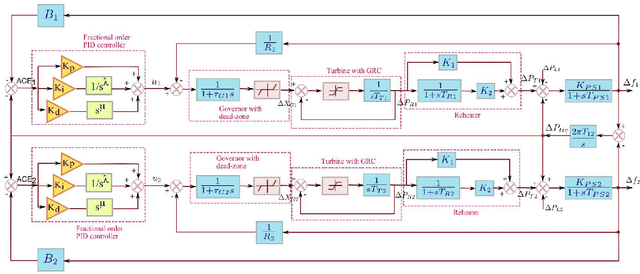


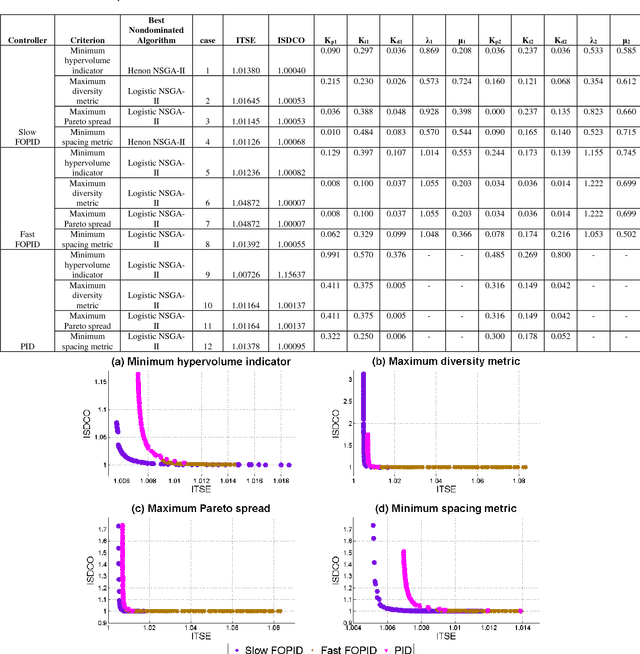
Abstract:Fractional order proportional-integral-derivative (FOPID) controllers are designed for load frequency control (LFC) of two interconnected power systems. Conflicting time domain design objectives are considered in a multi objective optimization (MOO) based design framework to design the gains and the fractional differ-integral orders of the FOPID controllers in the two areas. Here, we explore the effect of augmenting two different chaotic maps along with the uniform random number generator (RNG) in the popular MOO algorithm - the Non-dominated Sorting Genetic Algorithm-II (NSGA-II). Different measures of quality for MOO e.g. hypervolume indicator, moment of inertia based diversity metric, total Pareto spread, spacing metric are adopted to select the best set of controller parameters from multiple runs of all the NSGA-II variants (i.e. nominal and chaotic versions). The chaotic versions of the NSGA-II algorithm are compared with the standard NSGA-II in terms of solution quality and computational time. In addition, the Pareto optimal fronts showing the trade-off between the two conflicting time domain design objectives are compared to show the advantage of using the FOPID controller over that with simple PID controller. The nature of fast/slow and high/low noise amplification effects of the FOPID structure or the four quadrant operation in the two inter-connected areas of the power system is also explored. A fuzzy logic based method has been adopted next to select the best compromise solution from the best Pareto fronts corresponding to each MOO comparison criteria. The time domain system responses are shown for the fuzzy best compromise solutions under nominal operating conditions. Comparative analysis on the merits and de-merits of each controller structure is reported then. A robustness analysis is also done for the PID and the FOPID controllers.
* 31 pages, 19 figures, 2 tables
On the Existence of Synchrostates in Multichannel EEG Signals during Face-perception Tasks
Nov 29, 2016



Abstract:Phase synchronisation in multichannel EEG is known as the manifestation of functional brain connectivity. Traditional phase synchronisation studies are mostly based on time average synchrony measures hence do not preserve the temporal evolution of the phase difference. Here we propose a new method to show the existence of a small set of unique phase synchronised patterns or "states" in multi-channel EEG recordings, each "state" being stable of the order of ms, from typical and pathological subjects during face perception tasks. The proposed methodology bridges the concepts of EEG microstates and phase synchronisation in time and frequency domain respectively. The analysis is reported for four groups of children including typical, Autism Spectrum Disorder (ASD), low and high anxiety subjects - a total of 44 subjects. In all cases, we observe consistent existence of these states - termed as synchrostates - within specific cognition related frequency bands (beta and gamma bands), though the topographies of these synchrostates differ for different subject groups with different pathological conditions. The inter-synchrostate switching follows a well-defined sequence capturing the underlying inter-electrode phase relation dynamics in stimulus- and person-centric manner. Our study is motivated from the well-known EEG microstate exhibiting stable potential maps over the scalp. However, here we report a similar observation of quasi-stable phase synchronised states in multichannel EEG. The existence of the synchrostates coupled with their unique switching sequence characteristics could be considered as a potentially new field over contemporary EEG phase synchronisation studies.
* 30 pages, 22 figures, 2 tables
 Add to Chrome
Add to Chrome Add to Firefox
Add to Firefox Add to Edge
Add to Edge